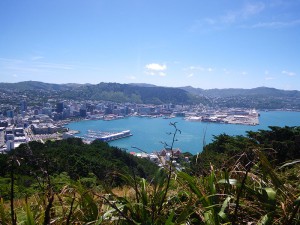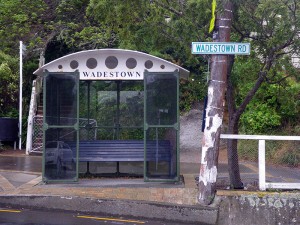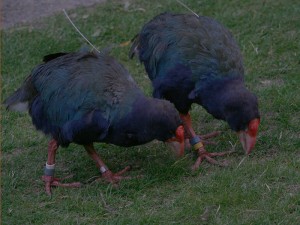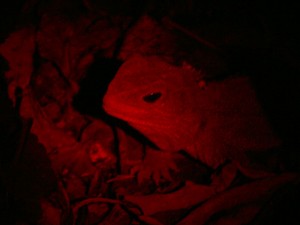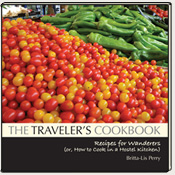As far as the big cities in New Zealand go, I think Wellington is at the top of my list. We’ve stayed there twice now, once on our way to the South Island, and once on our way back from the South Island, and while our experiences were different both times, what we’ve seen is two sides of Wellington’s vibrant personality. Also, the coffee is very good—this is a town that takes its coffee seriously.
On our first pass through, we saw Wellington in the rain. We stayed for a week, and the sun came out only on our last day in town. We took full advantage, and so did everyone else in town. The rain didn’t keep anyone inside, however. Apparently it rains a lot in Wellington so Wellingtonians were out as usual, doing what they do despite the weather. Our raincoats saw a lot of use that week, and the shorts only made it out of the backpack once. On our second trip through the city, we got sunny weather and warm temperatures, but also gale force winds—something Wellington is also known for—that nearly knocked us over as we crossed the street or came around a corner. Situated as it is on a natural harbor, surrounded by hills, the city is subject to volatile marine weather systems, especially those that barrel through the Cook Strait, on Wellington’s doorstep.
Our first week, we stayed in a guest house in the Wadestown neighborhood, just outside the city center. We took the bus into town, and we felt like locals after we bought our bus cards and swiped ourselves on and off every day. Despite our unfamiliarity with the city, we managed to navigate the bus system just fine (with tips from actual locals) getting ourselves to places like the Weta movie studio and Zealandia park with ease and, dare I say it, gusto.
On one of the sunny days, we took the cable car up to the botanic gardens at the top of the hill. It was a cruise ship day, so we shared the viewing platforms at the top with about a hundred cruise ship passengers, but we still managed to get great photos. When the sun comes out, Wellington turns out to be a picturesque city, nestled on a curving spit of land that creates a bay and natural harbor. The water is a turquoise blue, just a shade or two greener than the sky. Houses are tucked up into the hills, flat ground apparently not as important here as it is in the rest of the world. A few beaches dot the shoreline, but most of the waterline is built up into wharfs and quays and docks, as water traffic is almost as plentiful as highway traffic.
Downtown Wellington is more a series of downtown neighborhoods than simply a few square blocks of commerce. Blocks is actually a misnomer anyway, as the twisting streets follow the contours of the shoreline rather than adhering to a grid, and actually, a significant part of the area is built on reclaimed land. Plaques along the sidewalk a few blocks inland identify the shoreline of 1852. Wellington is New Zealand’s capital, so Parliament is located there, along with the beehive-shaped parliamentary office building next door. Across the street is the historic Government Building, apparently the largest wooden building in the Southern Hemisphere, though it was built to look like stone.
The centers of social action in Wellington are Cuba Street and Courtenay Place, on the opposite side of downtown from Parliament, with the commercial center laid out in the middle. Walking between the two, one passes as many people in business suits and pencil skirts as hipster jeans and dreadlocks. Continue to the far end to start passing mountain bikers and trail runners coming down from their workouts on Mt. Victoria. Cuba Street is where the cafes are, and the vintage boutiques and the funky galleries. Courtenay Place is where the theaters are, and the bars. We spent a little time in each.
There’s also hiking to be had in the city. The Otari-Wilton Bush, a sort of wild parkland and native botanical garden, was only a block away from our condo. After only a couple of minutes, we found ourselves immersed in the forest, passing waterfalls, hearing the calls of native birds, and passing joggers and families on picnics. We climbed to the top of a hill and found ourselves in a meadow dotted with New Zealand flax, where we watched tui spring from branch to branch, calling their distinctly melodic and gravelly songs to each other.
Zealandia is an eco-sanctuary dedicated to the restoration of native New Zealand flora and fauna. Before humans arrived, there were no land mammals in New Zealand, except for a couple of species of bats. The introduction of mammals, including rats, dogs and cats, stoats and possums, has wreaked havoc on New Zealand bird life. Zealandia aspires to re-create at least a section of the world where these predators don’t exist, so that the native bird species can survive as they did pre-humans, with a predator-proof fence—and a vigilant and dedicated staff.
We took a night tour at Zealandia, where we saw a kiwi, skittering off into the bush. It was bigger than we had expected, basketball-sized, Brian called it, with long legs and beak for digging through leaf litter and loose soil. That was the only one, however, though we searched high and low through the rest of the park. Sadly, neither one of us got a picture. We saw several tuatara, native lizards that were contemporaries of dinosaurs, and also nocturnal. We saw glow worms along the steep banks of the creek, and the trail got close enough to allow us to peer at them nearly eye-to-eye. We saw kaka, a native parrot, which screeched and played and buzzed us as we got close to their feeding areas. Our guide, having observed them for quite a while, thought that they delighted in startling people. We saw a pair of takahe, a large flightless ground bird, which was once thought extinct but was rediscovered in 1948. We also saw a spectacular sunset from the top of the hill, illuminating for us just what it was about Wellington that we liked so very much.
